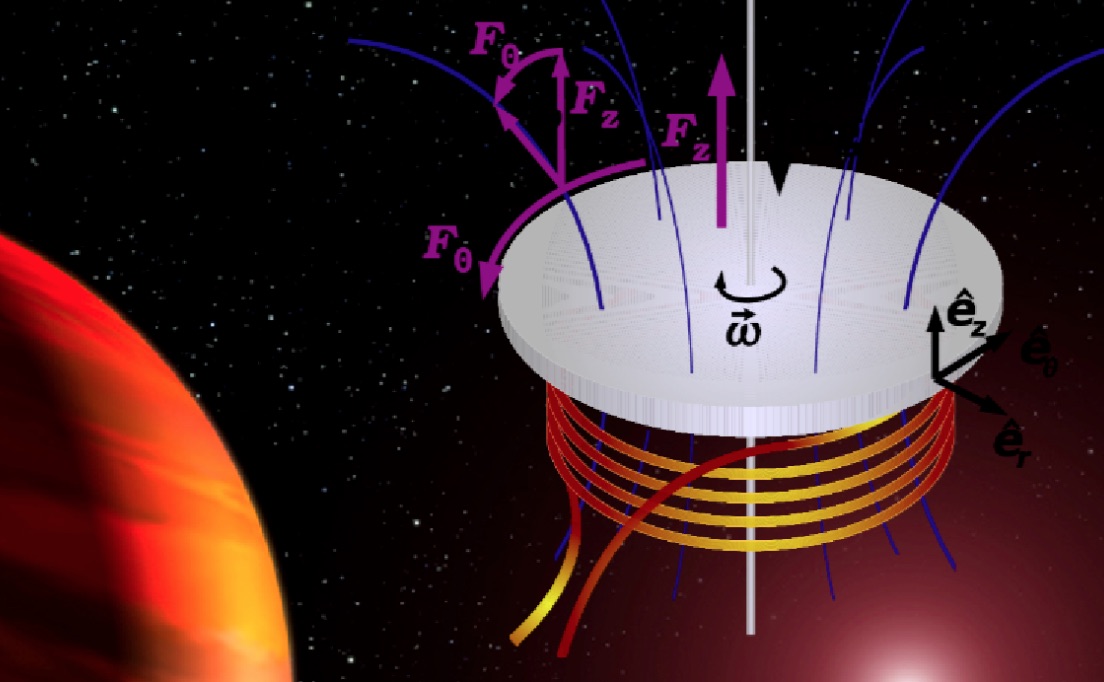The publication of an upcoming book edited by Takaaki Musha has been announced for the third quarter of this year. Chapter 7 has been authored by Jochem Hauser and Walter Dröscher and is entitled, “ELEMENTARY PRIMER OF FIELD PROPULSION PHYSICS”. I was very happy to have participated in the editing of that chapter for the authors.
Here is the description of the new book from the Nova Science Publishers, Inc site:
New Frontiers in Space Propulsion. ISBN: 978-1-63482-845-1
Editors: Takaaki Musha (Advanced Science-Technology Research Organization, Yokohama, Japan)
Book Description:
As we know, reaching the outer rim of the solar system in a relatively short period of time is impossible utilizing existing rocket technology. Radically ventured theories such as quantum vacuum propulsion must emerge if we have any desire to truly explore the far reaches of space. New concepts must be explored that may someday enable manned interplanetary and interstellar travel. With this in mind, it is imperative for scientists to study and create new forms of space trajectory to achieve this goal. New propulsion physics for such means may or may not be discovered in the future. In this book, the science behind ideal methods of space propulsion (such as warp drive and gravity-control) are examined to show connections between known facts, anomalies and visions concerning this study. This term is known as “frontier physics”; scientists presently use accepted physical paradigms to speculate and hypothesize forms of physics that will aid in future developments. In this case, that development is advanced methods of space propulsion.
Throughout this book, eminent researches discuss an overview of new propulsion systems which cannot be achieved by the conventional propulsion systems. Some methods that surpass modern study which would aid in the development of advanced space propulsion includes zero-point energy, quantum electrodynamics, space-time curvature and faster-than-light warp drive travel. It is hoped that these topics will assist readers in their journey to understand progressive studies of space propulsion systems. (Imprint: Nova)
Book Reviews
“A fascinating work covering the newest and most revolutionary ideas for space propulsion systems. Within the pages are ideas which will lay the foundation for mankind to truly reach out and touch the worlds around other stars.” – Reviewed by Grant Hayman of OVAL Technologies, Canada
“This book has been endorsed by the Journal of Space Exploration for its contributions to advanced space propulsion science, – which include approaches based upon fusion technology, photonic drive, Einstein’s general relativity theory, zero point energy, quantum electrodynamics, space-time curvature, electromagnetoroid dynamics, and warp drive for faster-than-light travel, that will contribute readers to know on the field of advanced space propulsion systems.” – Endorsed by Editor-in-Chief, Journal of Space Exploration
“In order to reach the outer rim of the solar system in a reasonable amount of time, new concepts must be explored that could someday enable such manned interplanetary and interstellar travel. Radically advanced space propulsion concepts, such as quantum vacuum propulsion and warp drive that rely on physics outside the present paradigms must emerge in the near future if we have any hope of human exploration of deep space. Throughout this book, these topics are discussed by eminent researchers which collectively provide an overview of a range of new propulsion concepts. For the purpose of manned space flight, interplanetary travel and interstellar travel could not be achieved by the conventional chemical propulsion systems. Concepts included in this volume include approaches based upon fusion technology, photonic drive, Einstein’s general relativity theory, zero point energy, quantum electrodynamics, space-time curvature, electromagnetoroid dynamics, and warp drive for faster-than-light travel. It is hoped that these topics will contribute reader’s knowledge of advanced space propulsion systems.” – Reviewed by Gary Stephenson, Aerospace Systems Engineer, Seculine Consulting, Redondo Beach, CA
Price: $210.00
Table of Contents:
Preface
Acknowledgements
New Frontiers in Space Propulsion Science Part I- The Environment and Some History Related to ‘Advanced’ Space Propulsion Science – (P. A. Murad, Morningstar Applied Physic, LLC, Vienna, VA, USA)
New frontiers in Space Propulsion Science Part II- Approaches to Push the New Frontiers – (P. A. Murad, Morningstar Applied Physic, LLC, Vienna, VA, USA)
Fusion Space Probe-Viper – (Akshata Krishnamurthy, George H. Miley, University of Illinois at Urbana-Champaign, IL, USA)
The Photonic Railway – (Young K. Bae, Y.K. Bae Corporation, Tustin, CA, USA)
General Relativistic Gravity Machines and Electromagneto-Toroidal Structure of E-M Field – (Takaaki Musha, Mario J.Pinheiro, Advanced Sci.-Tech. Research Organization, Yokohama, Japan, and others)
Possibility for Exploiting Zero-Point Fields of the Quantum Vacuum for Propulsion – (H. David Froning Jr, Department of Mechanical Engineering, University of Adelaide Adelaide, South Australia)
Elementary Primer of Field Propulsion Physics – (Jochem Hauser, Walter Dröscher, HPCC-Space GmbH, Hamburg and Ostfalia Univ. of Applied Sciences, Suderburg, Germany, and others)
On the Possibility of ZPF Space Propulsion Systems – (Takaaki Musha, Advanced Science-Technology Research Organization, Yokohama, Japan)
Space Drive Propulsion System Founded on the Continuum Mechanics of Space-time – (Yoshinari Minami, Advanced Science-Technology Research Organization (Formerly NEC Space Development Division), Japan)
Faster-than-Light Travel to the Stars – (Gary L. Bennett, Consultant in aerospace power and propulsion systems, Boise, ID, USA)
